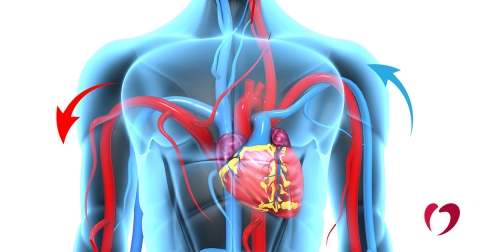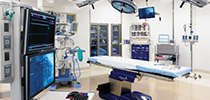An Overview of Veins and Vein Disease

Part of the cardiovascular system, veins are vessels that circulate blood throughout your body. Veins and arteries together help move blood through your body. Veins return deoxygenated blood from the organs back to the heart while arteries carry oxygenated blood from the heart to the organs.
There are four types of veins:
- Deep veins are located in deep muscle tissue or along bones with a corresponding artery nearby. Muscles compress around them to push blood.
- Superficial veins are close to the skin’s surface with no corresponding arteries. Blood moves more slowly without muscles to push.
- Pulmonary veins are an exception, as they are the only vein to carry oxygenated blood—from the lungs to the heart’s left atrium (upper chamber). Each lung has two pulmonary, so there are only four in the body.
- Systemic veins take deoxygenated blood from the rest of the body to the heart’s right atrium. They are the most numerous and are located throughout the body, from legs to neck, arms, and trunk.
Veins are more numerous than arteries and have thinner walls because they are low pressure and are moved by muscle contractions. The vein walls are thinner and more elastic than artery walls, which allows them to hold more blood. Veins range in diameter from 1 mm to 1.5 cm. with the smallest being called venules, which lead to capillaries and eventually into the large vena cava veins. Some veins contain valves that ensure blood does not flow backward.
What can go wrong with veins?
Vein conditions are generally the result of clotting and blockage or insufficient circulation. They most often appear in pregnant women and those with a history of clots or vein injuries or a family history of vein disease. Risk factors for vein conditions include age, gender, weight, smoking, some medications and lack of movement or sitting for long periods of time.
There are also two common disorders due to clots and blockages, referred to as thrombosis:
- Deep vein thrombosis (DVT) is a serious condition because the developed clot (usually in the leg) can move to the lungs and cause a pulmonary embolism. DVT requires medical treatment. Only about 50% of people with DVT feel symptoms like leg pain, pressure, tenderness or redness.
- Superficial thrombophlebitis is an inflamed superficial vein with a clot just under skin that could appear as a red streak and might be tender. It commonly accompanies varicose veins and generally does not pose imminent danger of the clot traveling to the lungs.
Common conditions caused by poor circulation/improper blood return are referred to as venous insufficiencies:
- Varicose veins happen when the one-way valves in superficial veins break down or their walls weaken. This allows blood to flow backward and pool, which can cause discoloration, bulging and inflammation.
- Spider veins often accompany varicose veins. These vessels close to the skin have broken and caused pools of blood that make a multi-colored web formation.
- Chronic venous insufficiency is also caused by blood collecting due to bad valves, but it happens in both the superficial and deep veins of the legs. It can have symptoms like coarse skin and skin ulcers.
If you are experiencing any symptoms related to your veins, contact the Peripheral Vascular Institute today to schedule an appointment with one of our physicians.




